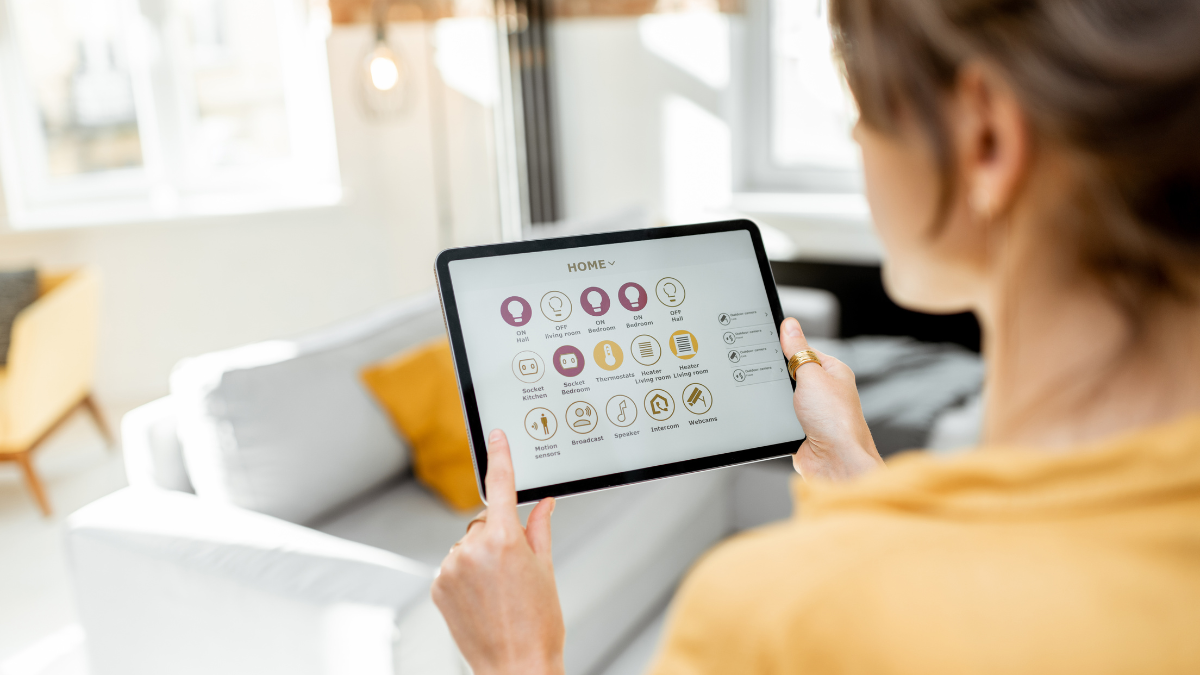
Exploring Smart Home Features That Can Increase Your Property Value
February 6, 2024 . Home Buyer's Guide . 10 min readIn the dynamic landscape of modern living, the concept of a home has evolved beyond the traditional brick and mortar. Today, technology has woven its threads into the very fabric of our living spaces, giving rise to the era of smart homes. The fusion of innovation and convenience has birthed a new way of dwelling, where homes are not just shelters but intelligent ecosystems designed to cater to our every need. In this exploration of the future of living, we delve into the realm of smart home features and how these technological marvels can not only revolutionize our daily routines but also elevate the market value of our properties. Join us in unraveling the transformative impact of smart homes on the modern living landscape.
What is a Smart Home?
In today’s rapidly advancing technological landscape, a smart home refers to a residence equipped with smart devices and systems designed to enhance efficiency, convenience, and security. It leverages the Internet of Things (IoT) to create a connected ecosystem where various devices communicate and collaborate to streamline daily tasks and improve the overall living experience. These intelligent features can be monitored remotely, often through a central hub or mobile applications. Examples of smart home features include automated lighting, thermostats, security cameras, door locks, and home entertainment systems. Integration of voice-activated assistants, such as Amazon Alexa or Google Assistant, allows residents to interact with their homes using voice commands. The primary goal of a smart home is to harmonize these technologies to adapt intelligently to residents’ preferences and habits, creating an environment that anticipates and caters to their needs.
Key Smart Home Features:
Smart Lights
Smart lighting, facilitated by smart bulbs, transforms the way homes are illuminated. With the convenience of controlling lights through a smartphone app or other smart home devices, traditional wall switches become obsolete. Beyond the basic on/off functionality, users can dynamically adjust brightness and even change the color of LED bulbs. The inclusion of motion sensors enhances safety, especially for small children or the elderly, by triggering lights in dimly lit areas. The versatility extends to creating customized light recipes for various activities like watching movies or working. This personalized approach ensures the perfect lighting for any situation at the touch of a button, showcasing the adaptability and convenience that smart home features like smart lighting bring to modern living.
Smart Security Systems
Smart security systems are comprehensive solutions that go beyond traditional alarms, offering homeowners a sophisticated network of interconnected devices that provide real-time monitoring and control. Equipped with features like motion detection, two-way communication, and night vision, smart security cameras provide instant alerts and the ability to communicate with visitors remotely, even in low-light conditions. Additionally, sound and light alarms add an extra layer of security, deterring potential threats and notifying homeowners of any unusual activity. With cloud storage options, footage can be accessed and reviewed at any time. The seamless integration of smart security systems not only enhances safety and peace of mind but also serves as a powerful selling point, significantly elevating a property’s overall value and desirability in the competitive real estate market, thanks to these cutting-edge smart home features.
Smart Appliances
Enter the era of intelligent living with Smart Appliances – a transformative force that seamlessly embeds technology into everyday chores. This category encompasses a diverse array of products, featuring smart refrigerators, ovens, washing machines, and more. Smart ovens, for instance, transcend traditional cooking appliances by offering advanced features such as remote operation, energy efficiency, and seamless integration with smart home systems. These ovens can adapt to various cooking preferences, allowing users to control and monitor their culinary creations from anywhere via smartphone or other smart devices. Meanwhile, smart refrigerators take the guesswork out of meal planning by suggesting recipes based on available ingredients. With features like inventory tracking and freshness monitoring, these refrigerators contribute to kitchen organization, showcasing the multifaceted benefits of integrating smart home features into everyday appliances.
Integrated Home Entertainment
Smart home entertainment refers to the integration of advanced technologies and devices to create a seamless and interconnected entertainment system within a home. This typically involves the use of smart home features like smart TVs, audio systems, gaming consoles, streaming devices, and other connected gadgets that can be controlled and automated. Smart home entertainment systems often allow users to manage their devices through a centralized hub or mobile applications, providing convenience, flexibility, and an enhanced overall entertainment experience. These systems may include features like voice control, personalized content recommendations, and the ability to create custom settings for different entertainment scenarios.
Voice-Operated Systems
One of the most compelling smart home features that seamlessly integrates innovation and convenience is the advent of voice-operated systems. Virtual assistants are the brains behind these systems, understanding your commands and translating them into actions. They leverage voice recognition technology, allowing homeowners to effortlessly control various smart home devices and functions using simple voice commands. Picture adjusting the temperature of a smart air conditioner, dimming the lights, or even locking the doors – all achieved with the ease of spoken instructions. Virtual assistants like Amazon’s Alexa, Google Assistant, or Apple’s Siri have become central to modern smart homes. These intelligent virtual entities facilitate an interactive and personalized living experience.
On the other hand, Amazon Echo and Google Nest are popular devices that host these virtual assistants. Amazon Echo, powered by Alexa, and Google Nest (formerly known as Google Home), powered by Google Assistant, offer users voice-activated control over a spectrum of connected features, ranging from smart lights and entertainment systems to security devices. These have become key players in the smart home ecosystem, exemplifying the tangible devices that bring the capabilities of virtual assistants to life within households.
Conclusion
As we navigate the evolving landscape of real estate, embracing smart home features has become a strategic move for homeowners looking to increase their property value. From enhancing security to optimizing energy efficiency and providing a modern living experience, the incorporation of these technologies can truly set your home apart in the market. By staying ahead of the curve and adapting to the preferences of today’s tech-savvy buyers, you not only elevate your living experience but also unlock the full potential of your property’s value.



